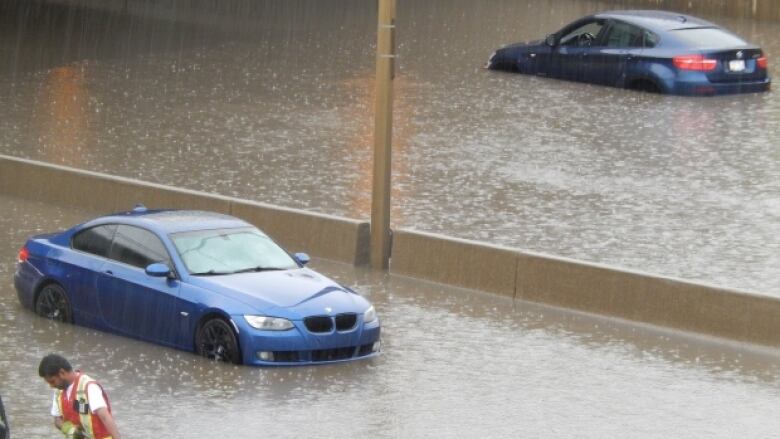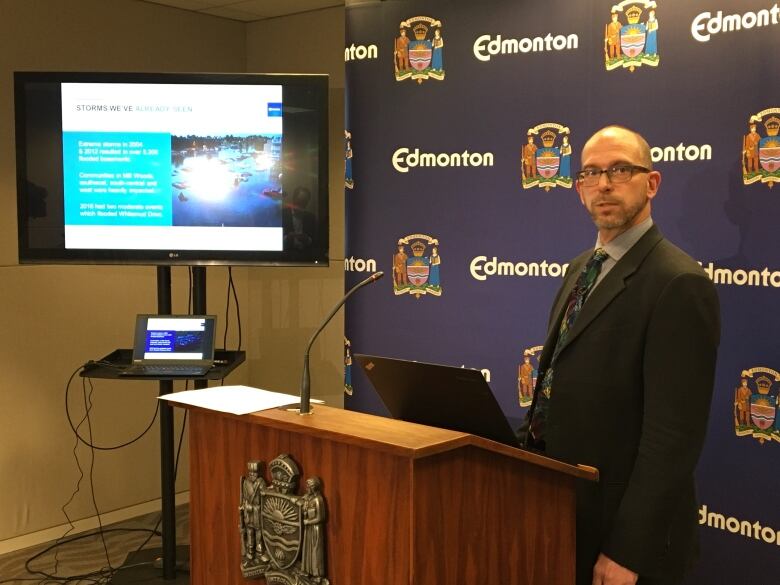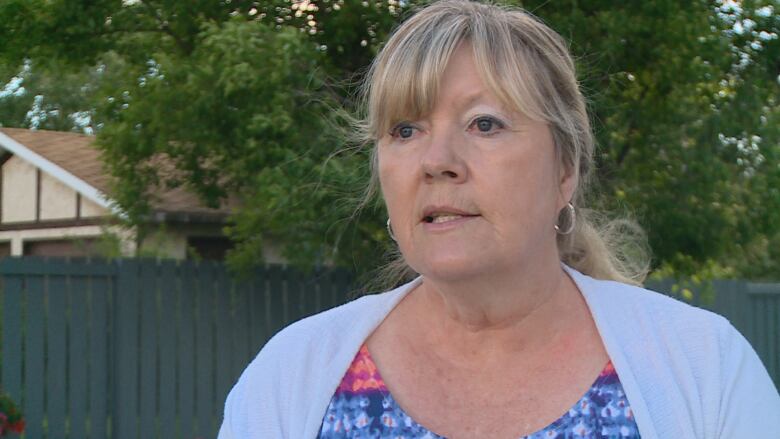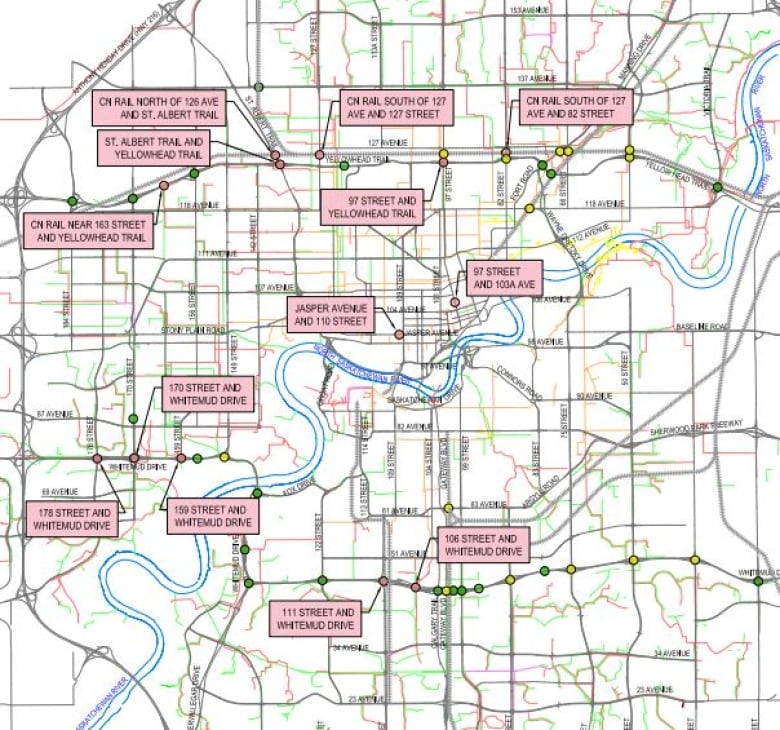'New normal' for Edmonton storm drainage would cost $2.6B, city report says
'We've seen the changes in weather patterns, we've measured it,' says city drainage director

A new report suggests the city spend $2.6 billionon drainage work to protect mature neighbourhoods from flooding in sudden and heavy rainstorms.
Several options werelaid out in the report released Monday, with city staff recommending one that is described as the "new normal" for Edmonton.
"We've seen the changes in the weather patterns, we've measured it, we're suggesting the right standard be the storm under scenario three," Todd Wyman, director of long-range planning for the drainage department, told reporters on Monday.

New neighbourhoods are built to a standard that would allow their drainage systems to handle what is referred to as a one-in-100-year storm, with drainage routes that go over land to a pond, said Wyman.
"We're trying to recreate that in established neighbourhoods," he said. "It's a bit harder, because you're working with existing infrastructure and houses."
The"new normalas defined by the city includes storms that cover only a small area, five square kilometres or less, and can quickly overwhelm sewer lines in older areas, flooding basements and road underpasses, he said.
That type of storm flooded 4,000 basements in Mill Woods in 2004; a similar storm flooded 1,200 basements in 2012, saidWyman.
Kathy Brower has lived for 20 years in the Tweddle Place neighbourhood of Mill Woods, an areanotorious for flooding.
In recent years, the city hastaken steps to improve drainage there. She's pleased to see an increased focus onother areas hit hard during heavy rain.
"Do I think it's going to solve everything? No. Do I think it will help a lot? Yeah, I believe so," she said.

But Brower thinks the "new normal," which is based on storms likely to occur once in 100 years,won't suffice.
"Honestly, I don't. I think they need to build these systems more for a one-in-200-year storm, but it all comes down to dollars and cents," Brower said.
Cost break down
Under that option, if the city spends $60 million annually the work would be done within 45 years.
Spending double that, $120 million annually would get the work done within 22 years.
How much this could cost Edmontonians on their utility bills still needs to be worked out, said Wyman.
Browersuspectsthere's a lowlikelihood that the city could go further to protect mature neighbourhodsen masse because it would be even more expensive.
But the damage to her family's home during heavy rain over the past 20 years has come with a price tag as well.
"Our deck pulls entirely away from the house and floats away. Every pieceof lawn furniture andour plant potsendup down the street," Browersaid. "Anything that's not bolted down floats away and our entire yard is underwater. When the water recedes, everything is covered in grey, mucky silt."
City councillors will discuss the report on Friday at the utility committee meeting, along with a second report that projects it would cost the city $73 million to reduce the flood risks at 27 underpasses and transportation corridors.
Thirteen locations, including eight with known flood histories, have been identified as the highest risks, the report said.
Included in that list are five underpasses along Whitemud Drive, including at 106th Street, where 10 people were rescued by boats following a downpour in July 2016.

Several solutions are outlined in the report, including:
- catch-basin improvements to increase the amount of surface water that can drain into the sewer system;
- construction of new sewers to carry water away from problematic areas;
- underground storage to hold runoff until it can be carried away by the sewer system;
- gates and real-time control systems that can manage water flow, balancing pipe capacity throughout the entire system to prevent flooding.
Improvements to high-risk locations would cost $19 million, and improvements to medium-risk locations would add another $54 million, the report said.
EPCOR is to take over the city's drainage department as of September 2017.
EPCOR is expected to come back with a recommended implementation plan, along with utility rate projections, in the first quarter of 2018, said Wyman.
With files from Roberta Bell












_(720p).jpg)


 OFFICIAL HD MUSIC VIDEO.jpg)
.jpg)



























































































